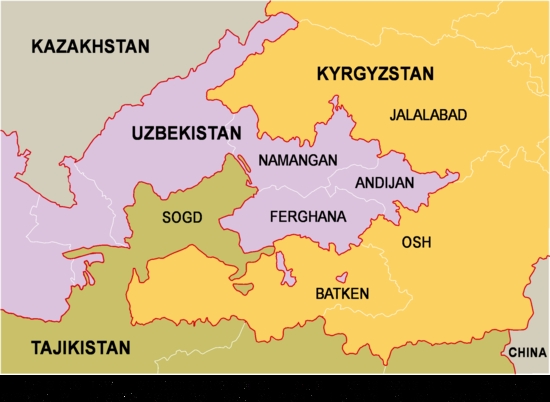The Russia-Ukraine war has reminded the world of enduring tensions between ex-soviet countries – even 30 years after the Soviet Union’s dissolution.
The death of Gorbachev, final president of the Soviet Union, in August 2022, has continued the discourse.
Known for the glasnost (openness) and perestroika (re-structuring) reforms, and lauded for his role in the peace movement, Gorbachev is heralded in the West.
But in ex-soviet Central Asia, the story is quite different.
Though Gorbachev’s reforms did bring the positive benefit of (relative) freedom of expression, there were also negative consequences. He is attributed with a failed economy and the breakup of the Soviet Union and as a result, looked upon with scorn by inhabitants of ex-soviet countries.
But Gorbachev was not solely responsible for the poor living conditions, wrecked ecology, and border conflicts in Central Asia.
These issues had been ongoing for a long time.
For a start, the soviet borders drawn in Central Asia were complicated and didn’t always accurately reflect the ethnic groups who lived there. Something which was manageable when there was freedom of movement and trade between the republics.
In the event of sudden, unplanned independence though? Border clashes and resource disputes were inevitable.
One recent example is the conflict on the Kyrgyz-Tajik border over a water supply dispute at Batken, which escalated on September 14th, 2022. Though there was a ceasefire, it didn’t last long, and fighting resumed on September 16th.
At present, it is estimated that there are around 100 fatalities and nearly 137,00 people displaced from their homes.
On September 20th, under pressure from Russia, a Peace Deal was signed. Though it is hopefully a step towards more positive relations in the region, it was extremely controversial amongst the Kyrgyz population due to some of its provisions. As such, there is a real danger that conflict may re-emerge in the future.
A source in Khujand, Tajikistan, at the time of the initial escalation, describes how they heard heavy artillery early in the morning. Given the distance between Khujand and Batken (125km), this is a worrying sign of how far along the border the conflict had spread, as well as the advanced military technology being used.
When asked what most locals thought of the conflict though, there was a striking similarity to the general opinion amongst Ukrainians and Russians following Russia’s invasion of Ukraine.
Though there are some who add fuel to the fire, the majority consider their neighbours across the border to be just that – neighbours. Especially given that Tajik President Rahmon and Kyrgyz President Japarov were, at the time of the conflict, “breaking bread in Central Asian fashion” at the Shanghai Cooperation Organisation Summit in Uzbekistan, this conflict does not appear at face value to reflect what most Tajiks and Kyrgyz want.
But is there a solution to conflict caused by the legacy of colonialism? In the short term, it’s hard to say. The settling of border disputes and fair sharing of resources is something that may take many years, but that doesn’t mean it’s impossible.
It’s worth remembering that, though the countries of Central Asia in their current form are young, their rich cultures and traditions are ancient. Like most parts of the world, the region has, over the centuries, been ruled through different iterations of empires, unions, and now republics. As the phoenix-like Huma bird of the Uzbek emblem renews itself out of fire, Central Asia is continually evolving and developing.
The challenge is for peace to prevail through this process.
In the words of Martin Kimathi, Kenya ambassador to the United Nations Security Council, when reflecting on colonialism in Africa in the wake of Russia’s invasion of Ukraine, “We must complete our recovery from the embers of dead empires in a way that does not plunge us back into new forms of domination and oppression.”










